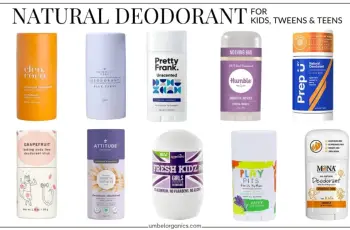
Hydration vs. Moisturization: A Dermatologist Explains the Difference
Imagine this: You wake up and your skin feels painfully dry. Or is it dehydrated? It can be hard to tell, just as it can be hard to determine whether you need hydration or moisturization. Although the words may seem like synonyms, they are very different in the world of skin care. It can all be very confusing. That’s why we asked two board-certified dermatologists—Lindsey Zubritsky, MD, and Kenneth Mark, MD—to break it down for us.
Read on to learn the key differences between hydration and moisturization (and find out how to determine what your skin needs).
What does it mean to hydrate your skin?
Hydration of the skin means increasing its water content. Imagine hydrating your skin like taking a refreshing sip of water from a Stanley cup to quench your thirst. To do this, Zubritsky recommends looking for ingredients that attract and retain water. “This typically affects the outermost layer of the skin, plumping it up,” she explains.
What does it mean to hydrate your skin?
Moisturizing focuses on improving and strengthening the skin barrier, Zubritsky explains, which typically leaves skin feeling soft and supple. It also helps lock moisture into the skin.
Mark believes that hydration and hydration are not mutually exclusive. However, when we think of the typical “moisturizer,” we think of products that smooth or soften the skin.
Determine what your skin needs
The key to deciding next steps is to determine whether your skin is dry or dehydrated, Zubritsky says. “If your skin is dehydrated, then your skin is lacking water and may need hydrating ingredients to replenish moisture,” she says. “But if your skin is dry, your skin is lacking oil and may need a moisturizer to replenish moisture.”
“However, these are not always mutually exclusive and there is significant overlap, especially when it comes to the symptoms you experience and the moisturizer you choose,” she continues. Dry skin may have a rough texture, flake, redness, or itchiness. Dehydrated skin, on the other hand, can feel tight, look dull, and make fine lines and wrinkles more noticeable.
To determine if your skin is dehydrated, she recommends doing the pinch test. “Gently pinch the skin on your cheeks or hands. If the skin is slow to return to normal, it’s likely dehydrated.”
How to moisturize your skin
“When moisturizing your skin, it’s important to pay attention to ingredients such as humectants,” advises Zubritsky. Humectants attract and absorb water (usually from the environment) and are found in serums or moisturizers. Mark and Zubritsky highlight hyaluronic acid as one of the best humectants for hydrated, plump skin. “One of my favorites is Neutrogena Hydro Boost Water Cream ($20),” says Zubritsky. “It contains hyaluronic acid, which delivers nine times more moisture than untreated skin. It really leaves skin looking hydrated, plump, radiant, and dewy.”
“Another of my favorite ingredients is lactic acid, which acts as a humectant to increase the water content of the skin,” adds Mark. Additionally, lactic acid — an alpha hydroxy acid (AHA) — is also ideal for gentle exfoliation without irritating those with sensitive skin.
How to moisturize your skin
“When moisturizing your skin, look for ingredients that strengthen and support the skin barrier, such as emollients or occlusive ingredients,” advises Zubritzky. She recommends ingredients like ceramides, dimethicone, shea butter, lanolin, or petrolatum. “One of my favorite moisturizers is Tatcha The Dewy Skin Cream Enriching Moisturizer ($72),” she tells us. “It’s a rich, luxurious moisturizer with dimethicone, squalane, and antioxidants to lock in moisture.”
“In the world of ingredients and dermatology, carriers are important,” says Mark. “Very dry, cracked skin often requires an ointment with occlusive physical barrier protection, such as Aquaphor Ointment ($18).”


